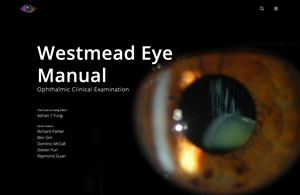13 Rhegmatogenous Retinal Detachment Special Scenarios
13.1 Rhegmatogenous Retinal Detachment: Re-detachment Surgery
13.2 Macular Hole Retinal Detachment
13.3 Retinoschisis Retinal Detachment
13.4 Optic Disc Pit Retinal Detachment and Maculopathy
13.5 Giant Retinal Tear Detachment
13.6 Retinal Dialysis
13.7 Macular Folds
13.8 Sickle Cell Detachment
13.9 Viral Retinitis Associated Retinal Detachment
13.10 Paediatric Retinal Detachment
13.11 Coloboma Associated Retinal Detachment
13.12 Inherited Retinal Dystrophies and Retinal Detachment
13.11 Coloboma Associated Retinal Detachment
Retinochoroidal coloboma occurs secondary to a failure of closure of the optic fissure during weeks 5-7 of fetal development. Colobomas occur in 2–14 per 100,000 live births[1] of which 50% present unilaterally.[2] Causative genetic variants are found in 8% of cases[3] and whilst most are sporadic, autosomal dominant, recessive and X-linked inheritance patterns are reported. Colobomas occurring as a result of chromosomal defects are usually associated with systemic abnormalities. Perinatal environmental triggers include nutritional (maternal vitamin A, E and folate deficiency, hypothyroidism), drug exposure (mycophenolate, anti-convulsants, thalidomide), and maternal infections (CMV, toxoplasmosis, Zika virus).[4]
Retinochoroidal coloboma is a complex disorder with a variable prognosis requiring regular ophthalmic examination to monitor for sight-threatening complications including retinal detachment (RD). RD risk in patients with coloboma increases with age, with rates ranging from 2.4-47.5% in adult populations.[5]
Shah SP, Taylor AE, Sowden JC et al. Surveillance of eye anomalies (SEA-UK) special interest group. Anophthalmos, microphthalmos, and typical coloboma in the United Kingdom: a prospective study of incidence and risk. Invest Ophthalmol Vis Sci. 2011; 52: 558-564.
Morrison D, Fitzpatrick D, Hanson I. National study of microphthalmia, anophthalmia, and coloboma (MAC) in Scotland: investigation of genetic aetiology. J Med Genet. 2002; 39: 16-22
Patel A, Hayward JD, Tailor V. The oculome panel test: next-generation sequencing to diagnose a diverse range of genetic developmental eye disorders. Ophthalmology. 2019; 126: 888-907
Selzer EB, Blain D, Hufnagel RB, Lupo PJ, Mitchell LE, Brooks BP. Review of evidence for environmental causes of uveal coloboma. Surv Ophthalmol 2022;67(4):1031-1047.
Hussain RM, Abbey AM, Shah AR. et al. Chorioretinal coloboma complications: retinal detachment and choroidal neovascular membrane. J Ophthalmic Vis Res. 2017; 12: 3-10
Retinochoroidal colobomas are characterised by an absence of choroid, retinal pigment epithelium (RPE), and retina within the defect. An extension from the adjacent normal retina called the intercalary membrane (ICM) sits directly upon the ectatic sclera.[6] Subclinical RD has been reported along the margins of a coloboma. In these cases, optical coherence tomography (OCT) is essential pre-operatively for identifying the site of communication between the sub-ICM space and subretinal space. The zone of adhesion near the coloboma margin is known as the ‘Locus minoris resistentiae’ (LMR) or the point of least resistance.[6] Separation of the ICM from the sclera is termed ICM detachment. Peripheral retinal tears, ICM breaks, and dehiscence in the LMR can, in isolation or in combination, lead to RD. OCT imaging should be utilised to ensure there is no connection between the RD and the ICM detachment in colobomatous eyes with a peripheral retinal break and RD. Concurrent peripheral retinal breaks and LMR dehiscence allows the RD to extend into an ICM detachment. Conversely, breaks in the ICM accompanied by LMR dehiscence lead to RD. (Figure 13.11.1) illustrates these various scenarios.
All rights reserved. No part of this publication which includes all images and diagrams may be reproduced, distributed, or transmitted in any form or by any means, including photocopying, recording, or other electronic or mechanical methods, without the prior written permission of the authors, except in the case of brief quotations embodied in critical reviews and certain other noncommercial uses permitted by copyright law.
Westmead Eye Manual
This invaluable open-source textbook for eye care professionals summarises the steps ophthalmologists need to perform when examining a patient.

